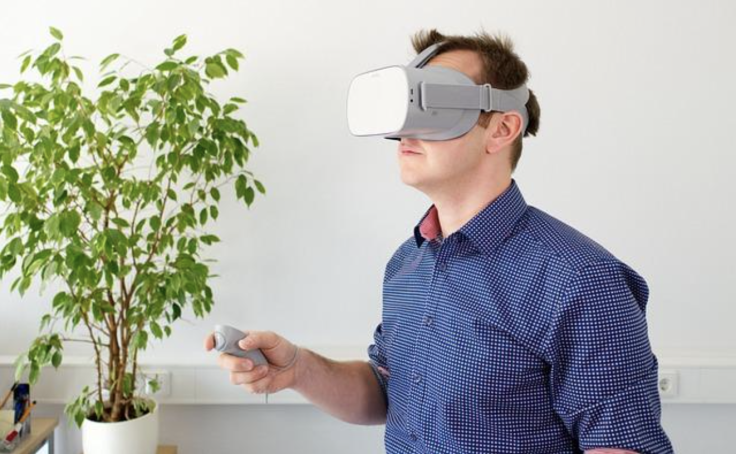5 Ways Virtual Workspaces in the Metaverse Can Improve Staff Collaboration

Office spaces are all about collaboration. For people, communication is essential in collaborating on any project. People must be on the same page and know in great detail what they're working on and why they're working on it. As a result, virtual offices are a big topic of conversation for those interested in this technology.
The promises and risks of the metaverse have been covered in great detail by almost every tech website around. So naturally, people want to know what this is, what it can be used for, and why we should go into this virtual space instead of using the regular internet.
Recreating Reality in a Digital Space
By quickly scanning the internet's evolution, we get a preview of how the metaverse might also evolve. According to estimates at elon.edu, in 1996, only 45 million people were online. Back in the day, people scoffed at the idea that anyone would one day watch movies or buy clothes online.
The metaverse benefits from this comparison because it shows that people are often skeptical in the early stages of a new digital innovation. People aren't sure what to think of it or what it should be used for. However, unlike the internet - a complete unknown to most people in the early 90s - the metaverse benefits from the internet's popularity. Billions of people know it by name. Unfortunately, this might enhance the skepticism instead of easing it.
The internet remains mostly a world of text and passive consumption of knowledge. Outside social media circles, the internet is a solitary place where we consume games, movies, music, and books by ourselves. However, the metaverse wants to make things a little closer to reality. Workspaces are one of its first true tests. Can this technology bring people together and inspire better cooperation?
Ways the Metaverse Improves Staff Collaboration
It's not called the future of work for nothing. The metaverse is meant to be accessible 24/7 to those in virtual office spaces. Just this constant accessibility allows people to meet up and collaborate. That's not where the benefits stop, though.
1. The Virtual Office in The Metaverse Is a Safe Place
Unlike physical office spaces that operate spontaneously, it's possible to structure a virtual office in the metaverse in a way that pleases everyone who works there. As a result, employers can work hard to create a virtual office space that feels safe and collaborative. As such, in the metaverse, the virtual office can provide a safe and secure environment for employees to work without the risks associated with physical offices. This can include protection against physical harm, natural disasters, accidents, and other unforeseen events.
2. A Virtual Office Still Allows Someone to Feel Like Having Their Own Space
Although you're collaborating with others in a virtual office space, you're still in the space that matters most to you: home. Remote workplaces often feel safer than real ones, especially if someone has social anxiety. It's all the benefits of collaboration with a built-in sense of privacy. The shared space is virtual; the employee's physical space remains private. But on the other hand, the ability to customize virtual workspaces can help team members feel more connected to their work and colleagues, improving morale and job satisfaction.
3. Virtual Offices Are Cheaper to Maintain
Creating a physical office space takes a lot of time, money, and workforce. Even those pretty office plants often cost hundreds of dollars; hiring someone to decorate the space adds dollars. You don't have to worry about supplies, decorations, or office chairs with digital office space. Everyone has their own at home. With fewer duties and stress on employees, they often collaborate more effectively.
4. Quicker and Better Communication
High-pressure projects and ones that require more collaboration often benefit from the ability to enter the office space at any time, regardless of business hours and everyone's schedule. Each employee has their own virtual space to review ideas and interject their ideas but on their own time. Moreover, virtual workspaces can provide team members a more engaging and interactive experience, promoting better teamwork and effective communication.
5. Virtual Workspaces Encourage Innovation
Immersive environments in the metaverse can foster greater creativity and innovation by providing employees access to cutting-edge tools and technologies. These tools can help employees work collaboratively in real-time, share ideas and feedback, and experiment with new concepts and solutions.
This can promote greater creativity and innovation as team members can experiment with new ideas and explore new possibilities in an immersive and interactive environment. Additionally, the metaverse can provide a space for employees to work on projects that may not be feasible in the physical world, enabling them to push boundaries and achieve new levels of innovation.
The Distraction-Free Workspace of the Future
Busy office spaces make it hard for some employees to think and offer their best ideas. Virtual office spaces in the metaverse have the potential promise of a less stressful office space and one where everyone is free to put forth their best ideas. But, unfortunately, the typical office space also has customers and clients around, leading to more stress.
Distraction is one of the chief enemies of productive collaboration. So when metaverse engineers design their virtual office spaces, they work on creating a serene, productive space where everyone is free to focus on the task at hand. There's no busy office chatter, no customer interruption, and no boss barging in right when you think of a fantastic idea.
Will metaverse office spaces eventually become the norm? Will people work at home more often than not? It's unlikely that virtual spaces would ever eliminate physical office spaces, but in some industries, the virtual office might become more popular.
© Copyright IBTimes 2025. All rights reserved.





















